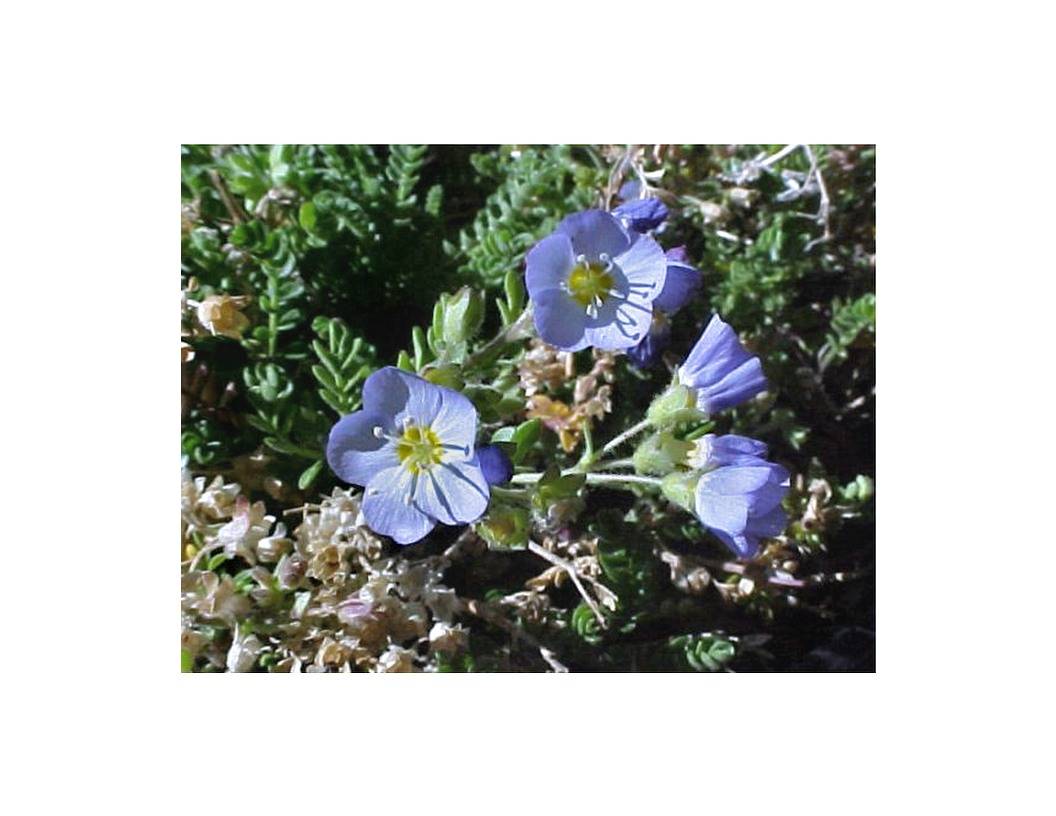Submitted by Kwiaht
It’s a small sky-blue alpine wildflower with distinctive fern-like leaves. Showy Jacob’s Ladder (Polemonium pulcherimum) is widely distributed throughout the western states at high elevations. In Washington state, it’s mainly found in the Cascade and Olympic mountains. Just two tiny patches have been found in the San Juan Islands. One patch, atop Mount Constitution, clings to the side of an inaccessible cliff, relatively safe from human activity but vulnerable to a rock slide. It consists of a half-dozen individual plants.
The other patch was at Iceberg Point on Lopez. When we first described it more than a decade ago, there were at least 11 individual plants within a 20-foot radius, and some were flowering. Kwiaht researchers have visited the patch every year since reported its decline, and recommended protective measures such as fencing and signage to public land managers.
Only three plants remained a year ago and appealed to the Lopez community in these pages to help us save them, (“A procession of threatened Lopez species,” June 1, 2017).
As we prepare for celebrating Earth Day 2018, there is only a single Jacob’s Ladder left at Iceberg Point. It will not flower this summer and appears to be dying.
Lopez is about to lose one of its native wildflower species irrevocably. We have failed as a community to protect the biodiversity of our own small island.
Admittedly, there will still be Showy Jacob’s Ladder elsewhere. You probably won’t want to hang over the edge of a 50-foot cliff on Orcas to see one (as I did, when taking a photograph), but you can find them along some trails at Mount Baker and Mount Rainier. There just won’t be any more to see on Lopez.
Does that matter?
Compare Southern resident killer whales. Their species, Orcinus orca, is highly mobile and cosmopolitan. It remains widespread and relatively abundant globally, with an estimated world population of at least 50,000. Our tiny, increasingly vulnerable “resident” pods represent barely 0.1 percent of their species.
If they disappear, there will still be other killer whales throughout the Atlantic, Pacific and Indian Oceans. The residents appear to be specially adapted to the Salish Sea ecosystem, however; and while they differ very little genetically from others of their species, they perpetuate a distinctive set of behaviors — a culture — that will be lost with them.
Even if Southern Residents were identical to other killer whales in biology and behavior, moreover, their loss would reduce Salish Sea biodiversity, and deprive the human population of the San Juan Islands in particular of a source of pleasure and income. “You can still see orcas in Barkley Sound” is not a sufficient excuse for abandoning local conservation efforts.
Likewise, the Polemonium population lost to Lopez is distinctive as an alpine wildflower that was living at sea level. It was almost certainly a relic of early post-glacial conditions as much as 10,000 years ago. It may be genetically distinct as well.
All it needed was protection from the hiking boots of visitors to Iceberg Point.
Why, Lopez, did you look the other way? Let’s not ever let this happen again.
For more information,email info@kwiaht.org.




